This is a very well hidden and pretty courtyard space that can be found off another alley just moments from Hampstead tube station.
The name of the yard is said to come from the Goulding family, who were granted a large swathe of land in the area by Sir Robert Wroth sometime in the late 1500s. It’s said that the land was a disused sand pit, which didn’t sound that promising, but today it’s the heart of Hampstead town centre, so it worked out well after all.
The first cottage in which the Gouldings lived was No. 6 Golden Yard, the yearly rental value of which was assessed in 1646 at £3, at which time the population of Hampstead was only around 200 people.
In 1662, Thomas Goulding, a blacksmith, was granted a cottage and forge, which he had recently built in the yard. According to a helpful sign in the yard, other residences were erected here by the Goulding family in the late 17th and early 18th centuries, by which time this was called “Goulding’s Yard.” An entry in 1758 gives the names of those entitled to use “the said Pump in the yard for water, the common necessary house and watercourses”.
However, in 1779, the estate was sold by Sarah Goulding (then a Mrs Brown) to John Bitton — ending some 200 years of ownership by the same family. When John Bitton died in 1822, the estate was sold separately, his beneficiary living at that time in Benham Place close by.
The name appears to have changed around the same time, showing up for the first time as Golden Yard in 1831.
In the 1890s, the houses in the yard were rebuilt behind their facades, as there is a news report in the Hampstead & Highgate Express about the improvements and additions of indoor toilets.
The side alley might have once been a lot busier because on the corner of the yard was a newsagent, which appears in the 1949 movie For Them That Trespass, and you can still see the shop front facing into the alley, although it’s now a private home.
Other than the founding family, it didn’t seem as if anyone of note ever lived in the yard until I came across a story from 1951.
At the time, Alfred Wheatcroft lived in the yard, and he played Beethoven’s Emperor Concerto on the piano in the Royal Festival Hall as a soloist in front of an invited audience of 3,000. What was significant is that he was the first soloist to perform there and did so before the concert hall was completed — as the entire concert was to test the hall’s acoustics.
Which is quite a claim to fame.
Today, a visit wasn’t accompanied by the sound of a piano rehearsal in one of the houses, but it’s a pretty little courtyard with nice flagstones and whitewashed walls. On a cold morning, the sun caught the yard quite well, so it justifiably earned its name of Golden Yard.
The street sign is also quite unusual, being painted gold and red lettering on a black background.
My autumnal visit caught the tree in its winter sleep, but it’s quite pretty in the summer months, and the residents have plenty of pot plants dotted around the yard on all sides. Overall, it is a lovely little enclave of peace and quiet, just across the road from the busy Hampstead tube station and up the Hollybush Steps.

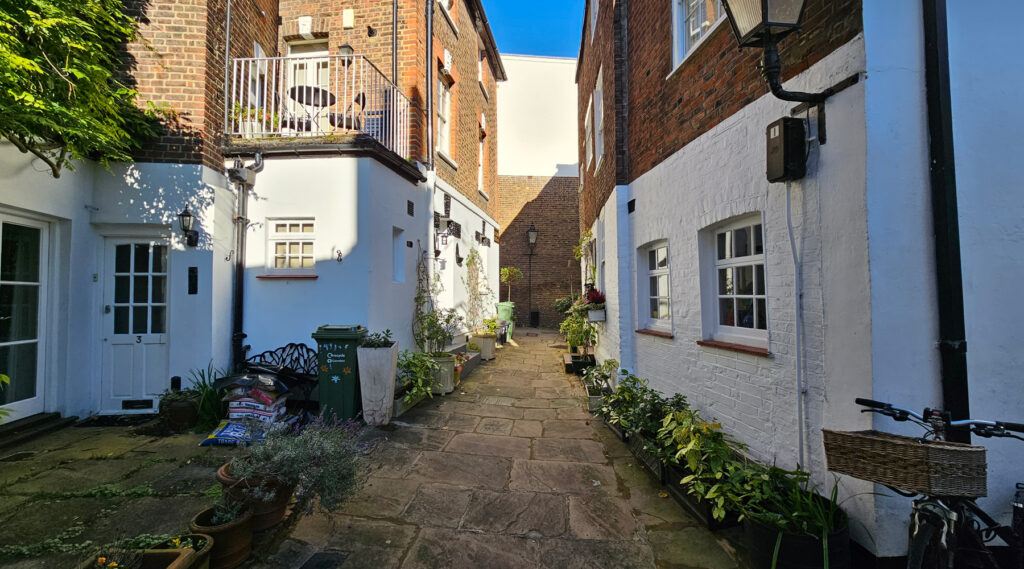
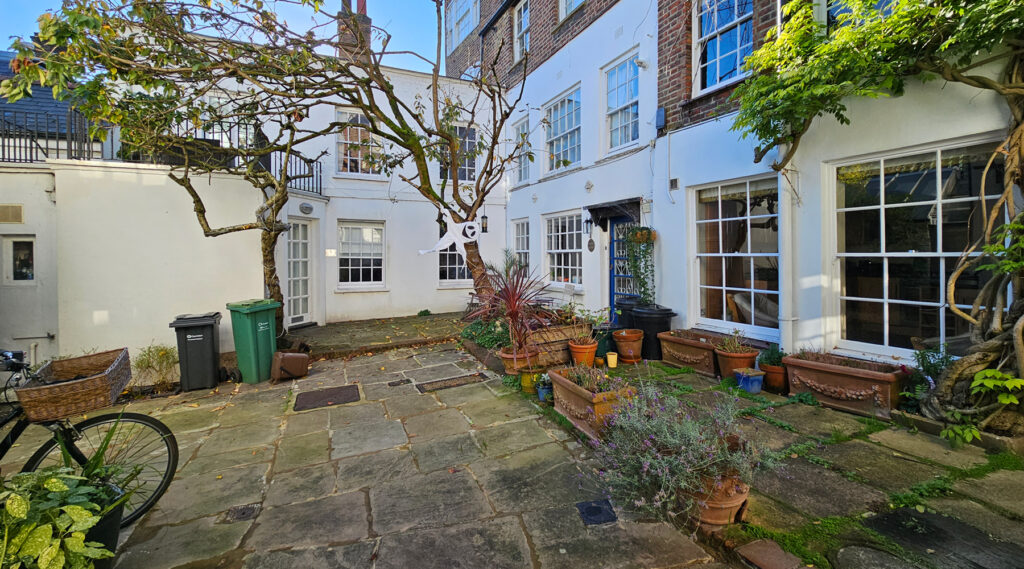
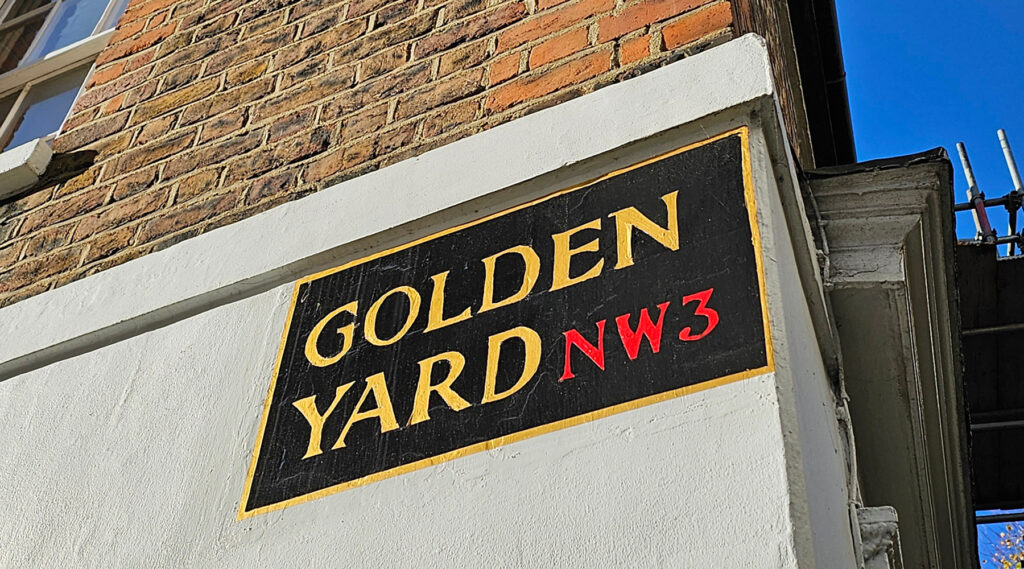
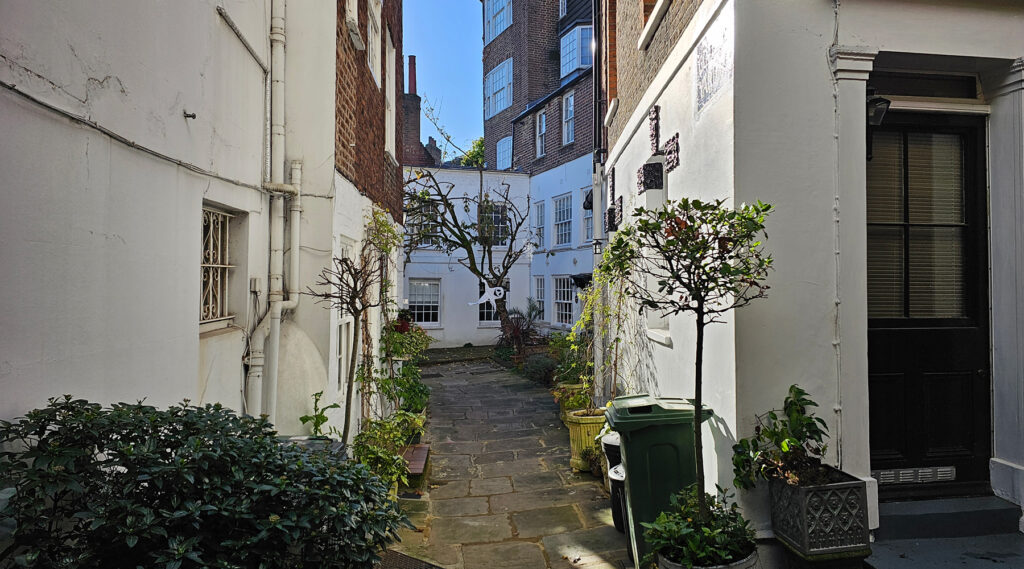
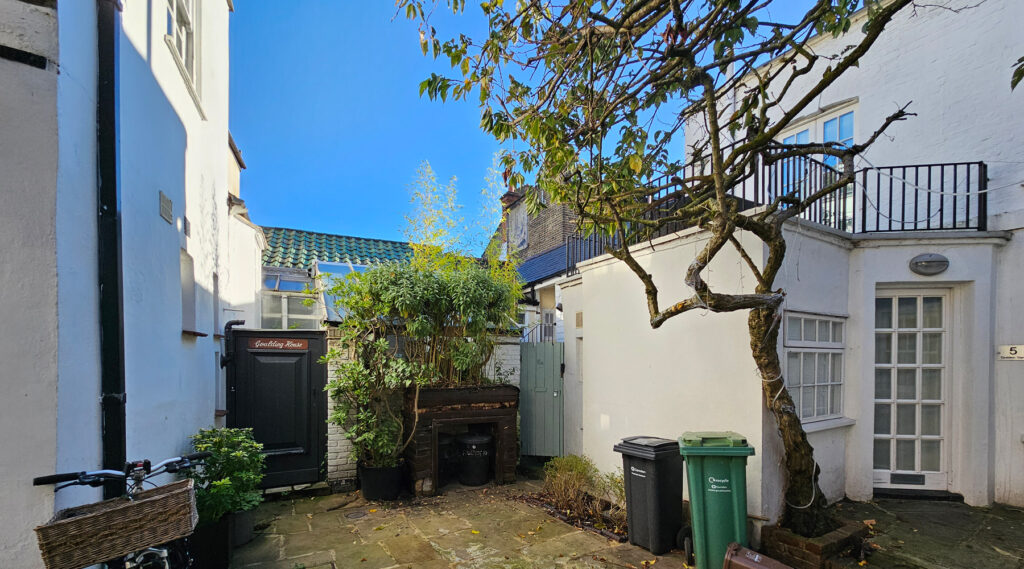






Hampstead Borough Council was renowned for its brown tiled, individual letter, street name signs. It looks as if this is one of them repainted. Sadly when Hampstead was incorporated into the the new London Borough of Camden in 1965 the Labour council decided any replacement street names would be of a corporate style on enamel. The Labour dominated council wasn’t having the Conservative ‘toffs’ of Hampstead’s unique signs, fortunately most still survive. Ironically, if Hampstead were still a borough the Hampstead ‘intellectuals’ would ensure it was Labour controlled.